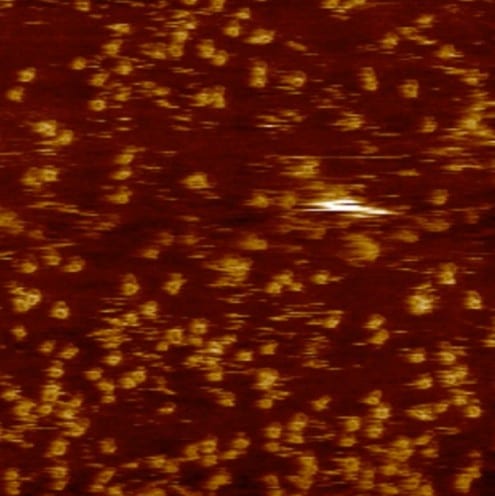Nanodrills in action
By Oli Usher, on 2 December 2014
A team of scientists at UCL and partner institutions has today published a study showing how certain harmful bacteria use tiny ‘nanodrills’ to make holes in our cell membranes.
These rings of toxin molecules assemble themselves on the cell membrane, then slice down, punching a hole and spitting out the piece of membrane they cut away. The rings then hold the hole open, much like an eyelet.
This image is a still from a ‘video’ produced by an atomic force microscope (AFM) in Bart Hoogenboom’s lab at UCL. AFMs feel a surface rather than seeing it – a tiny needle is repeatedly moved across the surface and feels the shape and hardness of the sample: lighter colours represent raised surfaces.
In the full video (below), we see the ring-like structures skating over the surface of the membrane, before they start perforating the membrane.
 Close
Close



